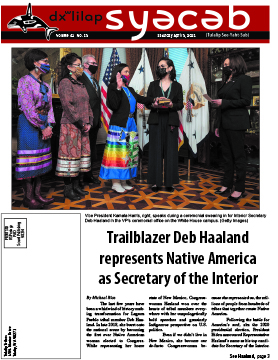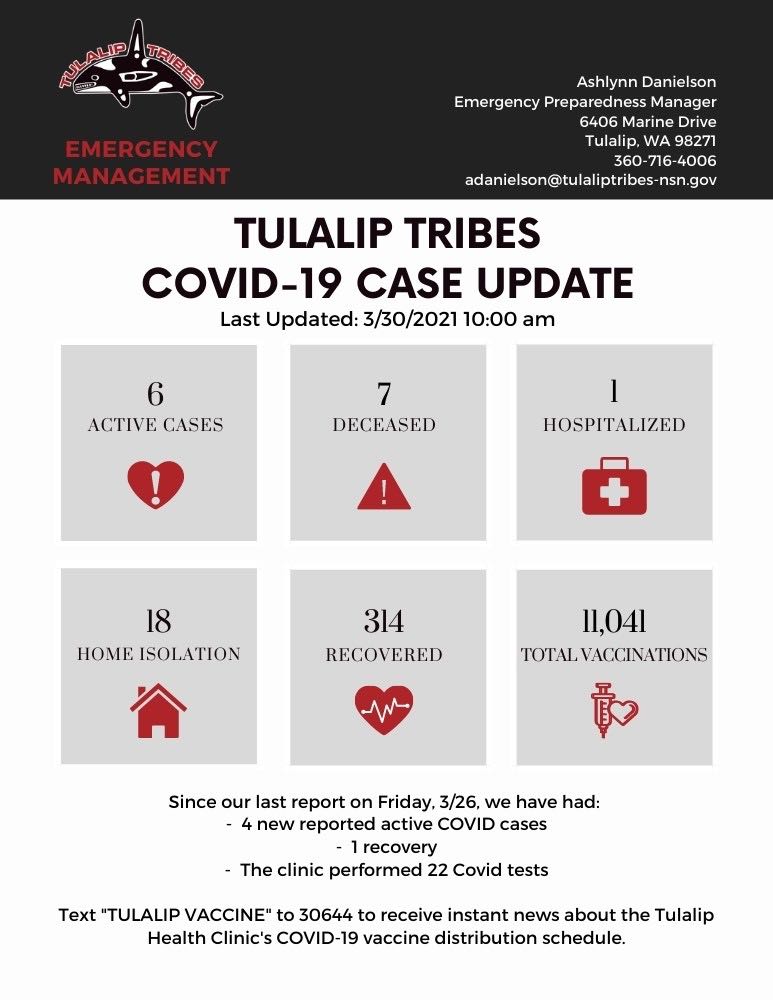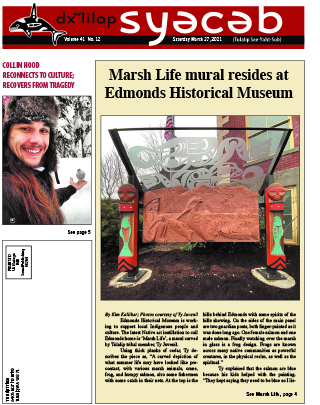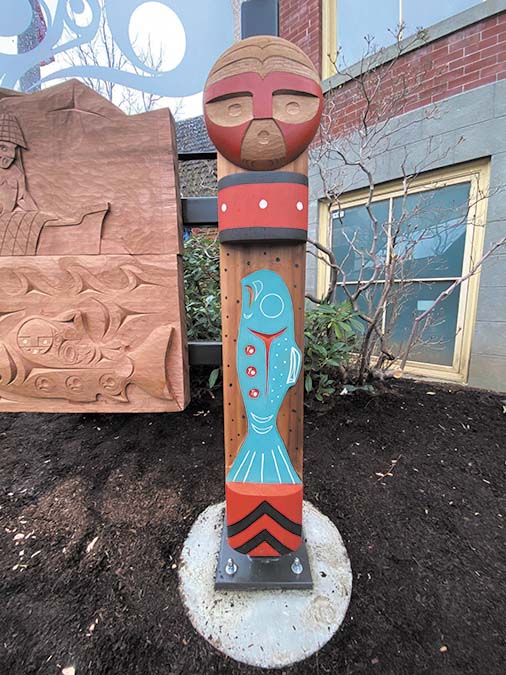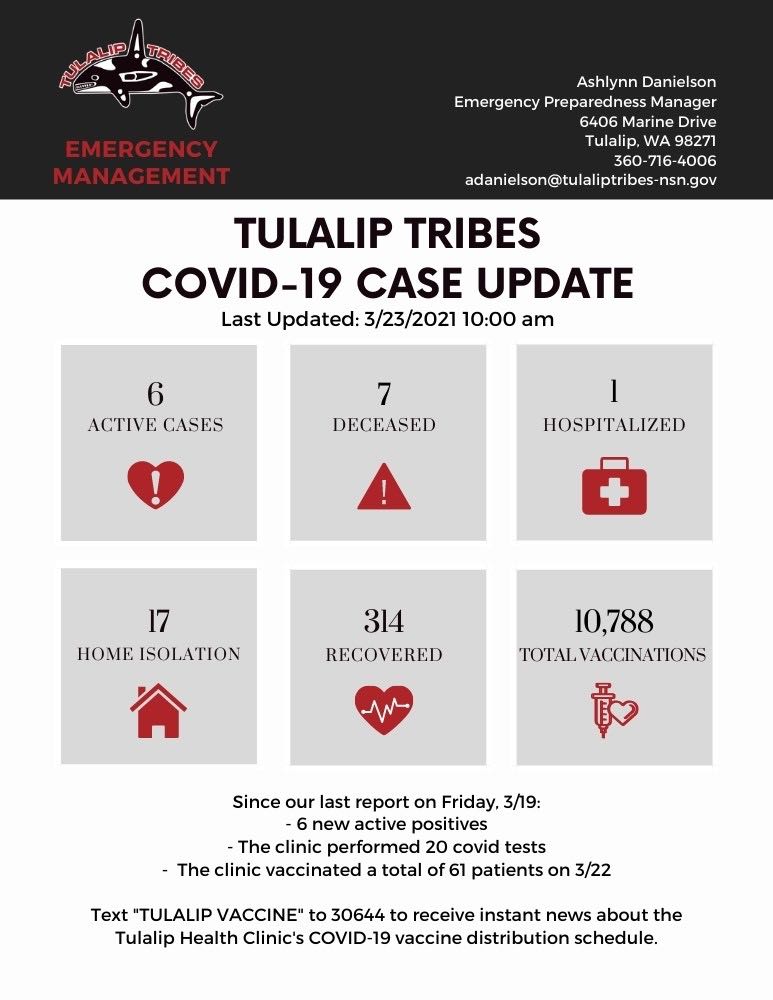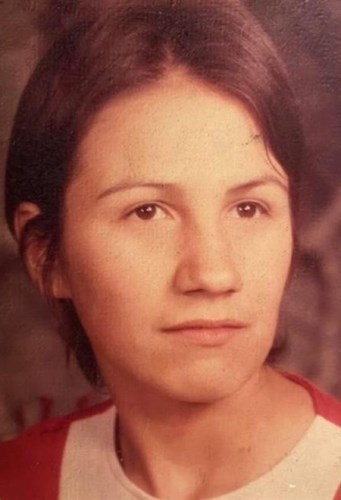
Author: Kim Kalliber
April 3, 2021 syəcəb
Trailblazer Deb Haaland represents Native America as Secretary of the Interior
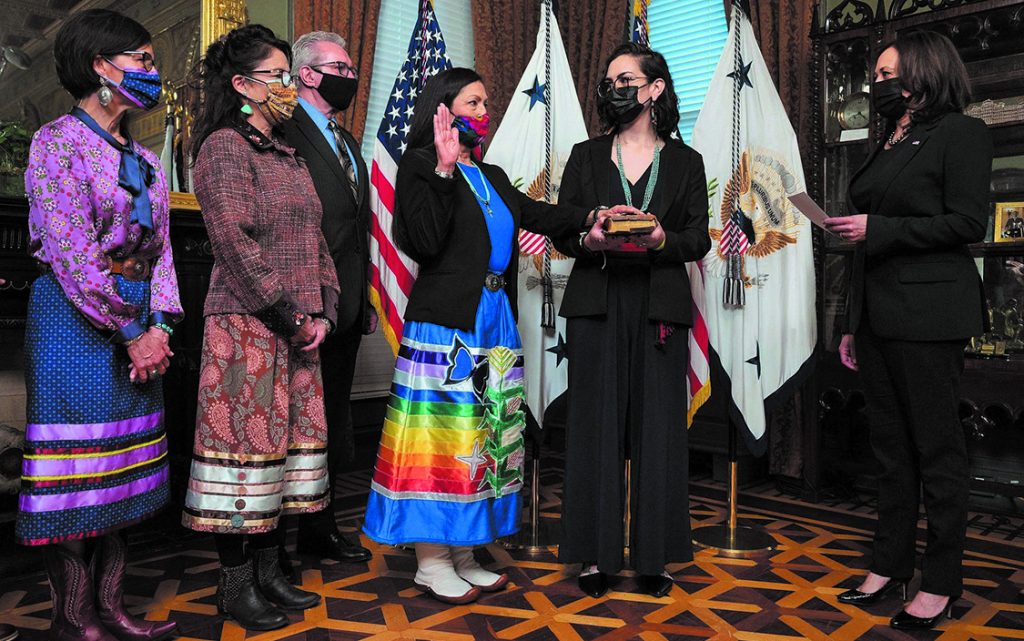
By Micheal Rios, Tulalip News
The last few years have been a whirlwind of history making transformation for Laguna Pueblo tribal member Deb Haaland. In late 2018, she burst onto the national scene by becoming the first ever Native American woman elected to Congress. While representing her home state of New Mexico, Congresswoman Haaland won over the hearts of tribal members everywhere with her unapologetically bold speeches and genuinely Indigenous perspective on U.S. politics.
Even if we didn’t live in New Mexico, she become our de-facto Congresswoman because she represented us, the millions of people from hundreds of tribes that together create Native America.
Following the battle for America’s soul, aka the 2020 presidential election, President Biden announced Representative Haaland’s name as his top candidate for Secretary of the Interior. In doing so, the Biden Administration acknowledged the history of past mistreatment and destructive policies that have hurt tribal communities.
After all, the Department of the Interior is the primary federal agency charged with carrying out the United States’ trust responsibility to Native people, maintaining the government-to-government relationship with the federally recognized Tribes, and promoting and supporting tribal self-determination. Interior provides services to over 2.4 million Native citizens that include education, social services, economic development, law enforcement, housing improvement, disaster relief, road maintenance, and natural resource management.
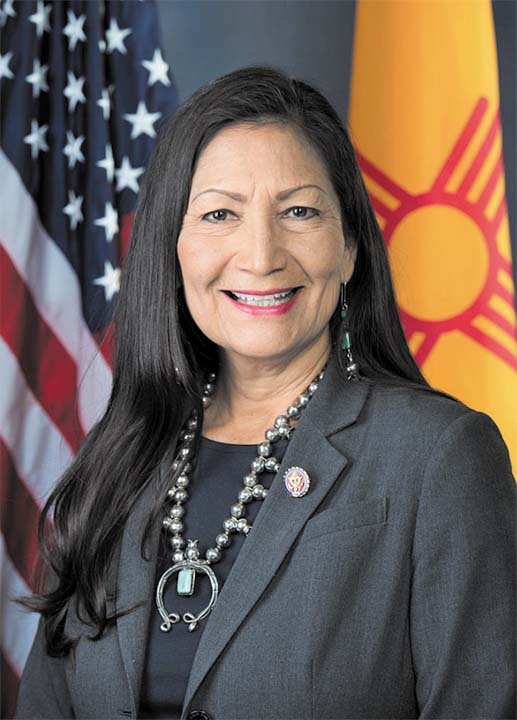
Seems only appropriate that after so many generations worth of termination based policy and mismanagement of tribal appointed funds, that an actual Native American political leader finally be given an opportunity to manage the Interior. Only then can true healing begin and trust start to build between the 574 federally recognized tribes and the U.S. government agency tasked with supporting their overall health and development.
“I’ll be fierce for all of us, for our planet, and all of our protected land,” said Deb Haaland in her nomination acceptance speech. “This moment is profound when we consider the fact that a former secretary of the interior once proclaimed it his goal to, quote, ‘civilize or exterminate’ us. I’m a living testament to the failure of that horrific ideology.”
Representation and diversity matter to the 35th generation New Mexican, whose connection to her Laguna Pueblo people is unquestioned. Her unique life experiences as an Indigenous person shape the 60-year-old’s political decisions to benefit her Native brothers and sisters in a manner previously unimagined. She explained to The Guardian, “We don’t need people who all have the same perspective, we need people from various parts of the country, who’ve been raised in different ways, who bring that history and culture with them, and employ what we’ve learnt from their parents and grandparents, and bring all of that to bear in the decisions that we make.
“Environmental injustice and economic injustice have taken a hold of so many communities, and they’ve had enough. They want us to pay attention and help them to succeed. As far as Indian Country is concerned, I want to make sure tribal leaders – and all marginalized communities – have a seat at the table.”
After a two-day confirmation hearing in early March, basically a high-profiled, public interview by congressional leaders of both political parties, the U.S. Senate met on March 15 to vote on Haaland’s history making appointment. The vote was 51 for and 40 against, more than enough to confirm her as President Biden’s Interior secretary. It was another remarkable vote on the side of Haaland who has broken down yet another barrier and opened the door to new possibilities by becoming the first ever Native American Cabinet secretary.
The build up to her Thursday, March 18 swearing-in ceremony was full of fervor across Indian Country. And to her credit, the tribal trailblazer embraced the momentous occasion in true indigenous style by proudly wearing a traditional ribbon skirt, white leather moccasins, and an assortment of turquoise Native bling for the nation to see.
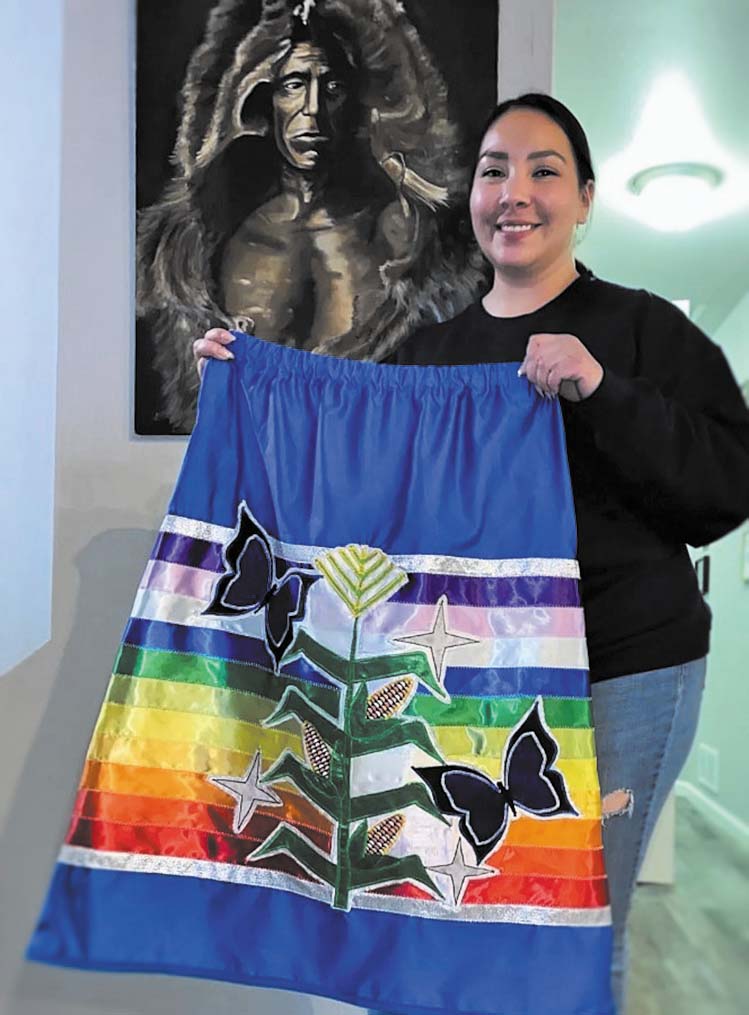
Standing in front of Vice President Kamala Harris with her right hand raised, Deb Haaland was sworn as the 54th Secretary of the Interior. The long rainbow ribbon skirt adorned with a corn stalk, butterflies and stars was impossible to miss. The ribbon skirt is a symbol of resilience, sacredness and survival is not bound to one specific tribe, but heavily influenced by Plains tribes.
The story behind the dress is one of empowerment and survival of a community and also its designer. The garment was made as a “celebration-style skirt” in recognition of Haaland’s historic nomination, explained its creator Agnes Woodward, who is Plains Cree from Kawacatoose First Nation in Canada. The 38-year-old seamstress devoted weeks to creating the distinct piece of clothing from her home in North Dakota. While the rainbow colors are meant to represent all people and the pair of dark blue butterflies serve to offer an uplifting message, the cornstalk is a symbol of Haaland’s enrolled membership of the Pueblo of Laguna.
“Growing up, sometimes it felt like no matter how much we as a people fought for our right to be heard, for our right to be at tables making decisions on our behalf, it felt like we were often not heard,” said Woodward, the Plains Cree dressmaker, to CBC Radio. “So for Deb Haaland to be in one of the highest positions in this country in front of the world, standing in a ribbon skirt that represents our people is definitely a moment that obviously means we’ve been seen and that we are visible. Because she represents all of us.”
From Deb Haaland to Congresswoman Haaland to now Secretary Haaland with Cabinet-level decision making power, her journey has taken her from a New Mexico based reservation to the highest echelons of decision making in Washington D.C. She will lead the Department of Interior in a continued effort to respect tribal self-determination, ensure meaningful consultation with tribes on matters affecting their interests, and work in partnership with tribal governments to support the development of Native communities.
For the first time in history, the Interior will be led with Indigenous values and integrity. Following her swearing-in ceremony, Secretary Haaland said, “Today I stand on my ancestor’s shoulders ready to serve as the first Native American cabinet secretary. I am honored and ready to work. I look forward to tackling some of the nation’s most pressing issues so that future generations can enjoy our public lands and waters for years to come.”
Covid Case Report, March 30, 2021
March 27, 2021 syəcəb
Marsh Life mural resides at Edmonds Historical Museum
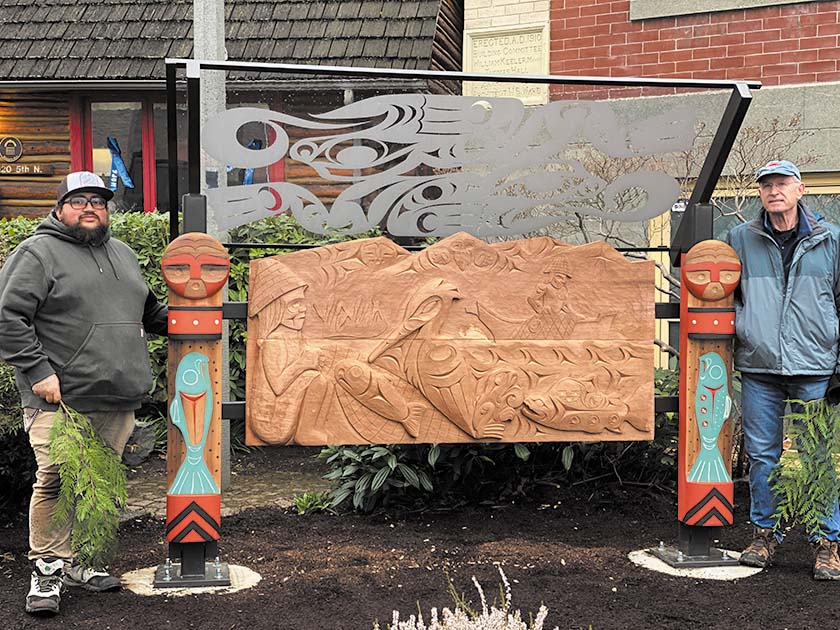
By Kim Kalliber; Photos courtesy of Ty Juvenil
Edmonds Historical Museum is working to support local Indigenous people and culture. The latest Native art instillation to call Edmonds home is ‘Marsh Life’, a mural carved by Tulalip tribal member, Ty Juvenil.
Using thick planks of cedar, Ty describes the piece as, “A carved depiction of what summer life may have looked like pre-contact, with various marsh animals, crane, frog, and humpy salmon, also some fishermen with some catch in their nets. At the top is the hills behind Edmonds with some spirits of the hills showing. On the sides of the main panel are two guardian posts, both finger-painted as it was done long ago. One female salmon and one male salmon. Finally watching over the marsh in glass is a frog design. Frogs are known across many native communities as powerful creatures, in the physical realm, as well as the spiritual.”
Ty explained that the salmon are blue because his kids helped with the painting. “They kept saying they need to be blue so I listened to them and it worked out amazing.”
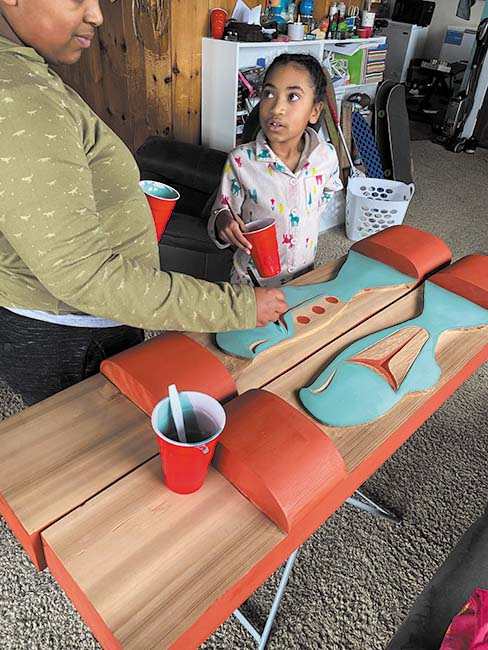
The mural rests at the front of the museum in the Reflection Plaza. According to the Museum, ‘honoring the land and the Coast Salish tribes who came before, ‘Marsh Life’ is an artistic depiction and window into what life may have been like for Coast Salish communities living in the area. The piece demonstrates how the biodiversity and natural resources of the marsh were an important part of Coast Salish traditions and way of life.’
“The whole project should have taken less than a year, but due to Covid we had to wait,” Said Ty of the project’s journey. “This was a wonderful journey, and I’m happy we got it blessed before it left Tulalip; I gave it a tour through Tulalip in the bed of the truck.
He added, “I’m hoping one day I can do something like this at home for Tulalip. Just keep paddling I suppose!”
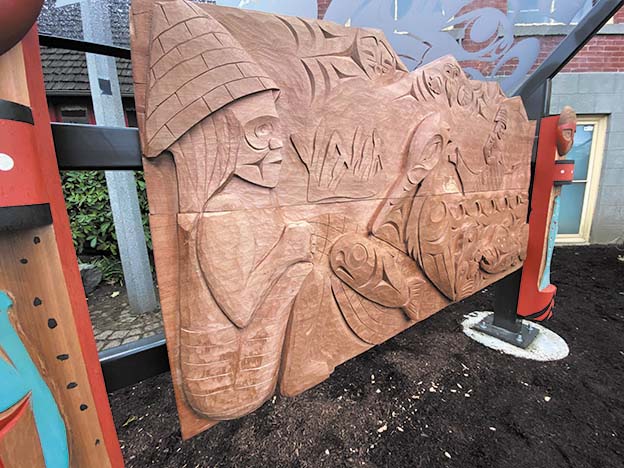
Also, keep an eye out for upcoming Youtube videos from Ty, on how to carve a paddle and other items.
The Edmonds Historical Museum is located in downtown Edmonds at 118 5th Ave N., Edmonds WA 98020. You can also visit historicedmonds.org.
Collin Hood shares how snowboarding helped him reconnect with cultural lifeways and recover from tragedy
The Fresh Powder Feels
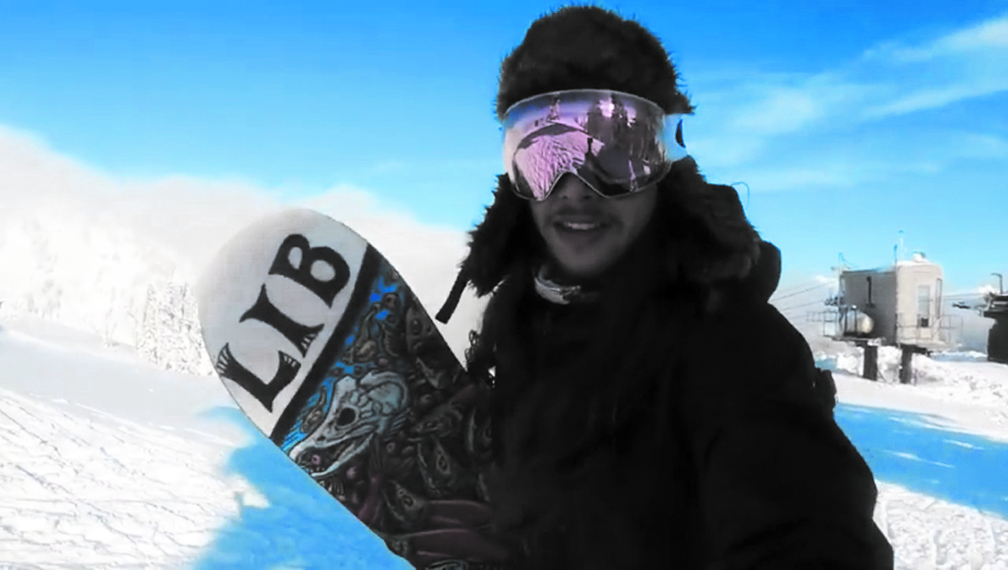
By Kalvin Valdillez; Photos courtesy of Collin Hood
As the original caretakers and citizenry of this local territory, the sduhubš people have an everlasting connection to the land, stretching from the Salish Sea to the mountainous regions. Thriving from the fish, deer, elk and berries, the tribe lived off the mountain’s plentiful resources year-round since time immemorial. Some tribal members would say that simply being high up in the mountains today, in their ancestral homeland, provides peace to their soul, a sense of spiritual solace that can be likened to what many experience when reflecting and pondering life near the ocean – a rejuvenated perspective on life itself. In fact, the Tulalip Tribes organized the annual summertime Tulalip Youth Mountain Camp, a week-long outing to the Skykomish mountains, just so their young membership can experience that connection to the land, the resources and their ancestors.
Approximately eight years ago, the tribe debuted a similar idea where their youth could engage in outdoor fun while exploring areas their great-great-great relatives once roamed. This idea, however, occurred in the wintertime and was a tad bit more extreme. By participating in the First Nations Snowboarding Team of Tulalip at a young age, Collin Hood, a local 25-year-old tribal fisherman, discovered not only a passion and a newfound community, but also a connection to his cultural and spiritual lifeways. And perhaps most importantly, a form of medicine and healing that only being on a board and shredding through fresh powder can provide.
Tulalip News: Thanks for taking the time to chat with us. Why don’t we begin with your background, can you tell us a little bit about yourself?
My name is Collin Hood, I’m a Tulalip tribal member. My dad is Alonzo Hood and his mom is Rachel Moses. My family has always been super connected with the mountains. We have property in Darrington and back when all the boarding schools were going on, my great-great-grandma Mariah Moses took the family up there to the mountains. I’ve always felt like it’s so easy to get up to the mountains in the springtime and in the summertime, but when winter hit, I never felt like I was able to get up there as often as I’d like to, to really get the chance to be with the trees, the water, the fresh air.
When did you first get into snowboarding?
I started snowboarding when I was young. I got introduced to it when I was doing the Tulalip snowboarding team that they had back in the day. The tribe had a team basically for us youth to connect with each other and the mountains, and just improve ourselves. But one of my buddies passed away while snowboarding and I hadn’t been up there since. It took a while for me to get back on the mountains. Last year, I got back into it; it felt so good. Snowboarding has so many challenges that you have to overcome and I feel like you’re able to bring those teachings from snowboarding back into your everyday life.
Any examples come to mind where lessons learned on the slopes can be applied to real-life situations?
Falling down and getting back up – that’s one of the biggest ones honestly. Falling down when snowboarding, when you see everyone around you succeeding and doing so good, you want to be like them you want to be able to do all these cool tricks and get a sponsorship, but you keep falling. You just feel like, ‘ugh, I’m never going to get good and I want to give up.’ But you keep going no matter what because you have that love and drive for it. I feel like you can bring that into your daily life. When you feel like life is kicking you and you keep falling down, you got to keep your head up. Especially after this past year of 2020.
When did you know that snowboarding was the sport you wanted to practice and dedicate your time to?
I knew I wanted to stick to this and keep practicing when I first felt that sense of accomplishment. I didn’t feel like I had to be the best right away, just knowing that I was making progress was all that really mattered.
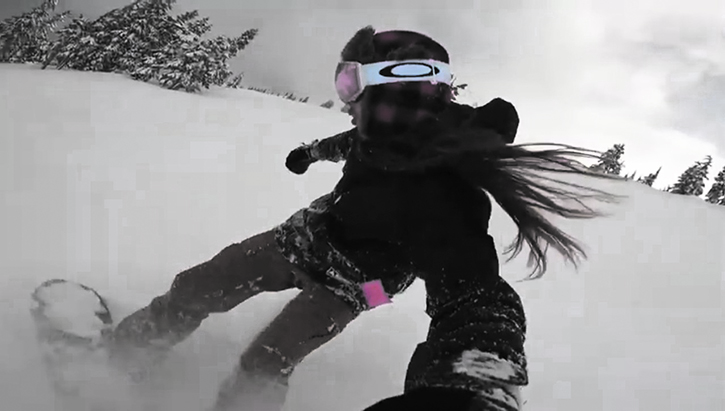
How has your skill-level advanced over the years since you first strapped-up to a board?
No one has talked to me about a sponsorship just yet, it’s something that I want to keep progressing toward. I’ve been practicing my 360’s, getting my back ones down, and I’ve also been trying to do back flips this year. The tricks are cool. I love doing tricks, but hitting the steep lines, the ones where you’re looking straight down and it’s like ‘alright, there’s no room for mistakes here’, that’s something that I’ve been really pushing myself towards lately. Those deep uncomfortable moments.
There’s a quote that I like that talks about living outside your comfort zone. I’ve been trying to do that a lot lately because I feel like life’s going to be a lot better for me if I keep doing that. My skill-level has progressed a lot over this past year. I definitely wasn’t comfortable enough to hit some of the steep lines. I have another family member, Greg Moses, he’s an awesome snowboarder he used to do the snowboarding team with me back in the day as well. He’s been really helping me, pushing me to excel outside of my comfort zone.
As a Tribal member, what does it feel like to be up in the mountains, admiring that scenery in the natural world that your ancestors and people took care of and thrived off of since the beginning of time?
It’s a feeling that is super hard to explain. You’re worry-free, you’re in your own zone. You feel like you’re floating on air, you’re literally flying through the trees. I have a ritual every single time I go up there. I like to pray and spread a little tobacco out before I hit the slopes. It’s important to me because I want to give thanks for everything that is given to me and for everything that is around me, with the fresh air from the trees and the snow that keeps falling, which will melt and return to the ocean to help the salmon return.
When I come back from snowboarding, my whole spirit is refreshed. When I’m up there, I feel like all my worries and fears disappear. I feel a lot closer to my relatives and friends who I’ve lost as well.
Are there any areas of your life where snowboarding has helped you through difficult times?
Charlie Cortez was one of my friends who passed away. It was really hard on me this year. The mountains were one of his favorite places to be as well. This whole winter time, I kept thinking how can I feel closer to him? Being on the water has been so hard for me. The mountains have been my getaway and my way to feel closer to him and everyone I’ve lost this past year. The fresh powder feels, man, it feels like nothing else.
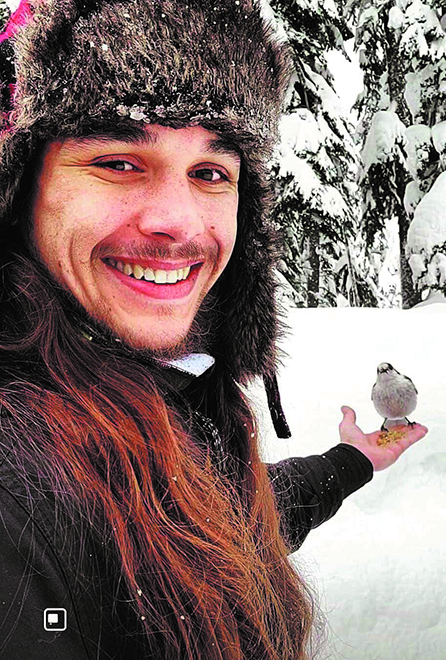
Is there a certain vibe you have to set while you’re up there? Any specific music you need to listen to, any gear that you need to wear?
Yeah, I do like listening to music while I’m up there. Mostly reggae and rock, keeping the vibes flowing, stuff that makes you feel alive.
I would say don’t go cheap on gear. You want high quality gear to keep you warm and your vision clear. Your whole experience will be that much better.
Do you have a favorite spot you like to go to?
[Mt.] Baker is definitely my home run. I usually don’t like to tell people that only because Baker is super low-key. It’s definitely so much fun, even if you’re not the best snowboarder, just to be up there having a good time, enjoying the vibes and energy the mountains brings.
Where do you see snowboarding taking you in your future?
I see it taking me around the world. I plan on making more videos and traveling to different mountains, hitting steeper slopes and doing cooler tricks. I see it taking me pretty far and I love that because it’s during the off-season of fishing. I get to go fishing and once fishing’s done, it’s snowboarding season baby! I feel like I’m living the dream, hunting, fishing and snowboarding; enjoying all the seasons.
Any advice on how to get started and involved in snowboarding for young tribal members?
If you’re interested in the sport, try it out. Ask your parents to help you get involved, reach out to anybody in the community who can help you learn. There’s a lot of people. There’s an entire snowboarding community within the tribe who are willing to help teach people, teach kids. I know it might be a little scary at first, but if you stick with it, you’re going to have fun and it’s something that you’re going to love for the rest of your life.
Where can people check out your work and find out more about snowboarding?
I have a YouTube channel, just under Collin Hood. I only have two videos right now. I’m just getting started and involved in making videos, so I’m super excited about it and can’t wait to make more videos.
Covid Case Update, March 23, 2021
Linda Lee Marie Zackuse
April 1, 1956 – March 14, 2021
Linda Lee Marie Zackuse was born April 1st,1956 in St. Iqnatius Montana to Steve and Mary Lou (McDonald) Howlett She went to join her relative’s on March 14th, 2021. Linda enjoyed playing bingo, calling bingo, cooking, holidays, traveling to Montana and La Conner to see her brothers,sister and other relative’s, She was also a stay at home mom and raised her children and her grandchildren, also baptize in the Catholic church, Graduated from the Chilocco boarding School.
She is survived by her husband Billy Zackuse, her children Lanada and BillyJo Howlett and Willie Zackuse. Brother Kevin and Sister Jamie and Her grandchildren Alex (Rachelle), Caitlin, Brandie, Brandon, Briana, Steven, Antonio, Aaliyah, Lola, Roico, Oscar, Paula, Hillary and numerous Nieces,Nephews and cousins. She is Preceded in Death by her Parents, Brothers Jack, Danny and Mathew, Daughters Lydia and Ruth.
A graveside service will be held Monday, March 22, 2021 at 12:00 Noon at Mission Beach Cemetery. Arrangements entrusted to Schaefer-Shipman Funeral Home.
